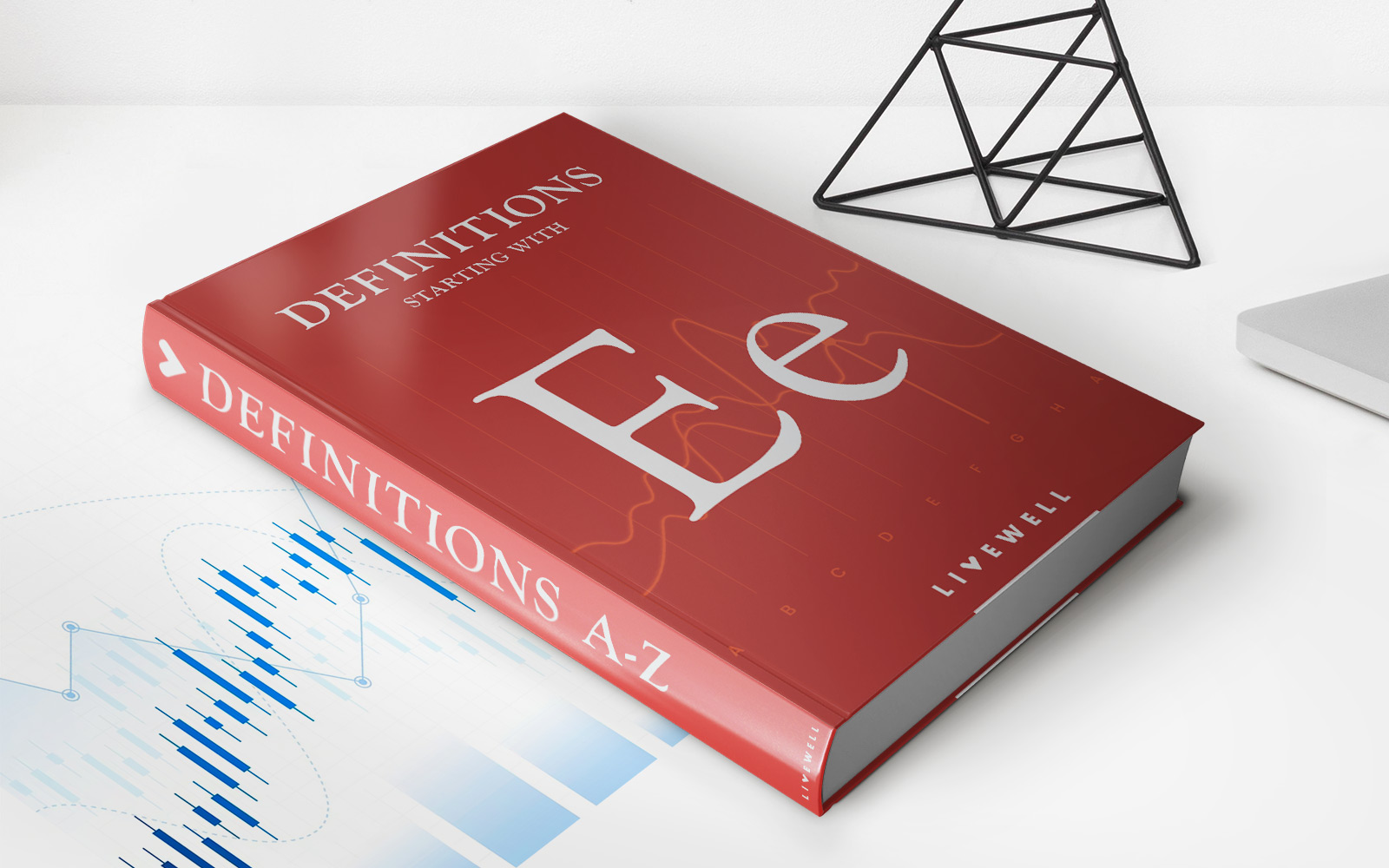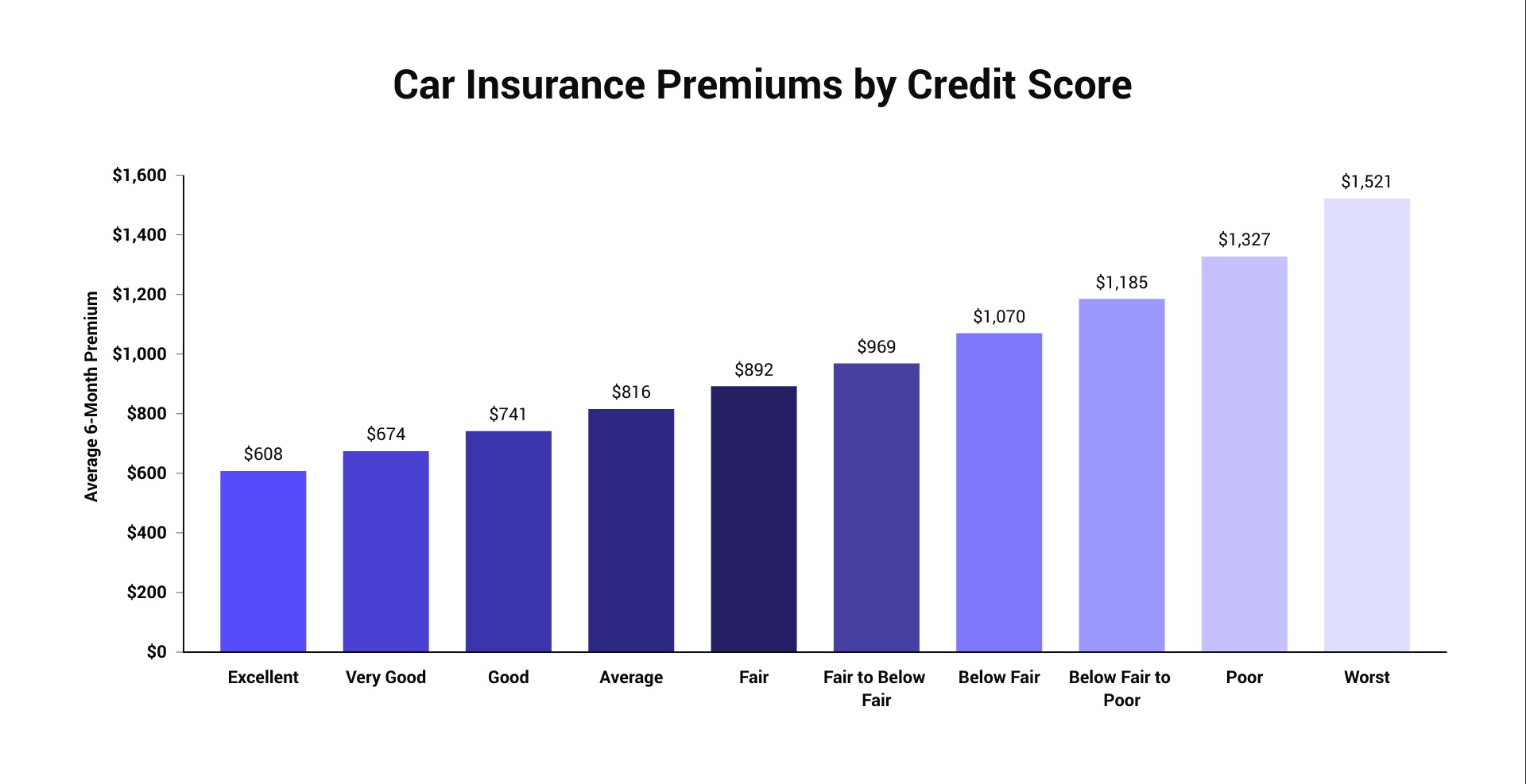Home>Finance>What Is The Minimum Free-Look Period For Newly Issued Life Insurance Policies In This State?


Finance
What Is The Minimum Free-Look Period For Newly Issued Life Insurance Policies In This State?
Modified: December 30, 2023
Learn about the minimum free-look period for newly issued life insurance policies in this state. Find out more about finance and insurance regulations.
(Many of the links in this article redirect to a specific reviewed product. Your purchase of these products through affiliate links helps to generate commission for LiveWell, at no extra cost. Learn more)
Table of Contents
- Introduction
- Understanding Free-Look Period for Life Insurance Policies
- State Regulations for Minimum Free-Look Periods
- Importance of Free-Look Periods for Policyholders
- Factors Affecting Minimum Free-Look Periods
- Comparison of Minimum Free-Look Periods in Different States
- Impact of Failing to Exercise Free-Look Period Rights
- Steps to Utilize the Free-Look Period
- Conclusion
Introduction
Welcome to the world of life insurance policies! When you decide to purchase a life insurance policy, you are making a significant financial commitment to protect your loved ones in the future. It’s crucial to understand all the terms and conditions of your policy to ensure that you are getting the right coverage for your needs.
One important aspect of life insurance policies that you should be aware of is the free-look period. The free-look period is a specified timeframe during which you can review your policy, make any necessary changes, and even cancel it if you are not satisfied with the terms or coverage. It gives you the opportunity to thoroughly evaluate the policy and determine if it meets your financial objectives.
The purpose of the free-look period is to protect the interests of policyholders. It allows you to make an informed decision without feeling rushed or pressured into a long-term commitment. Whether you are purchasing a new life insurance policy or considering switching to a different one, understanding the minimum free-look period mandated by your state is essential.
In this article, we will explore the concept of free-look periods, the regulations surrounding them, and their significance for policyholders. We will also discuss the factors that can influence the minimum free-look period and compare these periods in different states. Additionally, we will highlight the potential consequences of failing to exercise your free-look period rights and provide steps to utilize this period effectively.
So, whether you are a first-time life insurance buyer or a seasoned policyholder, read on to discover everything you need to know about the minimum free-look period for newly issued life insurance policies in your state!
Understanding Free-Look Period for Life Insurance Policies
The free-look period is a grace period that is granted to policyholders after they purchase a life insurance policy. During this period, which is typically stated in the policy contract, the policyholder has the right to review the terms and conditions of the policy, its coverage, and any associated riders. The main purpose of the free-look period is to give policyholders the opportunity to fully understand what they are getting into and to make any necessary changes or even cancel the policy if they are not satisfied.
The duration of the free-look period can vary depending on the state and the insurance company. In most states, the minimum free-look period is around 10 to 30 days, although some states may require longer periods. It is crucial to note that the free-look period begins from the date of receipt of the policy, not the date of purchase. Therefore, it is advisable to carefully review the policy as soon as you receive it to make the most of the free-look period.
During the free-look period, you have the right to examine all the details of the policy, including the coverage amount, premium payments, riders, and any exclusions or limitations. If you find any discrepancies or if the policy does not align with what was discussed during the sales process, you have the option to request modifications or even cancel the policy altogether.
It is important to thoroughly review the policy documents during the free-look period, carefully noting any terms or conditions that you do not fully understand. If you have any questions or concerns, it is recommended to reach out to the insurance company or your agent for clarification. Understanding the policy in its entirety will help ensure that it meets your financial goals and provides the intended protection for your loved ones.
It is essential to keep in mind that the free-look period is typically a one-time opportunity. If you decide to cancel the policy within this period, the insurance company is obligated to refund the premiums you have paid, although deductions may be made for any administrative or medical underwriting expenses incurred. However, if you exceed the free-look period, canceling the policy may result in financial penalties or a forfeiture of premiums.
Now that we have a basic understanding of what the free-look period entails, let’s dive into the state regulations regarding the minimum free-look periods for life insurance policies.
State Regulations for Minimum Free-Look Periods
The minimum free-look period for life insurance policies is regulated by individual states. Each state has its own requirements and guidelines that insurance companies must adhere to. These regulations ensure that policyholders are provided with a reasonable amount of time to review their policies and make informed decisions.
The duration of the minimum free-look period can vary from state to state. While some states may have a standard period of 10 to 30 days, others may require longer periods, such as 45 to 60 days. It is important to note that these durations represent the minimum timeframes specified by the states. Insurance companies may choose to offer longer free-look periods as a part of their customer service practices.
Some states also require that insurance companies clearly state the free-look period in the policy documents and provide written notice of the policyholder’s right to cancel within that period. This ensures that policyholders are informed about their rights and can exercise them easily if needed.
Furthermore, it is vital for policyholders to be aware of any specific rules or exceptions related to the free-look period in their state. For example, some states may have different free-look periods based on the type of policy, such as term life insurance or whole life insurance. Others may have separate provisions for policies purchased through direct channels, such as online or over the phone.
It is worth noting that state regulations regarding the free-look period can evolve over time. It is advisable to stay updated with the latest laws and guidelines in your state to ensure that you are aware of your rights and options as a policyholder.
To find out the exact minimum free-look period mandated by your state, you can refer to the insurance department website or contact them directly for precise information. They will be able to provide you with the most up-to-date guidelines and answer any questions you may have regarding the free-look period in your state.
Now that we understand the state regulations for minimum free-look periods, let’s explore why these periods are important for policyholders.
Importance of Free-Look Periods for Policyholders
The free-look period is a crucial provision that offers several important benefits to policyholders. It serves as a safeguard to ensure that policyholders have the opportunity to thoroughly review their policies and make informed decisions. Let’s explore some key reasons why the free-look period is important for policyholders.
1. Time for Evaluation: Life insurance policies can be complex, with various terms, conditions, and coverage options. The free-look period allows policyholders to take the time to review and understand these details. It enables them to evaluate whether the policy aligns with their goals, lifestyle, and financial situation. This helps ensure that the chosen policy provides adequate coverage and meets their long-term needs.
2. Transparency and Consumer Protection: The free-look period promotes transparency and consumer protection. It gives policyholders the opportunity to identify any discrepancies between what was discussed during the sales process and what is outlined in the policy documents. If there are any inaccuracies or misrepresentations, the policyholder can request changes or even cancel the policy without penalty, ensuring their rights and interests are protected.
3. Flexibility and Customization: During the free-look period, policyholders can customize their policies based on their specific needs. They can add or remove riders, adjust the coverage amount, or modify the premium payment options if necessary. This flexibility allows policyholders to tailor their policies to meet their unique circumstances and ensure that they are getting the most suitable coverage.
4. Peace of Mind: Knowing that a free-look period is available can provide policyholders with peace of mind. It helps alleviate any buyer’s remorse or concerns that may arise after purchasing a policy. Policyholders can have the confidence that they have the opportunity to review and make changes to their policy if needed, ensuring they are confident and satisfied with their decision.
5. Avoidance of Unwanted Commitments: Life insurance policies are long-term commitments that can have significant financial implications. The free-look period acts as a safety net for policyholders who may have entered into a policy hastily or without fully understanding the terms. It allows them to reconsider their decision and potentially avoid being locked into a policy that does not meet their expectations or needs.
The importance of the free-look period cannot be overstated. It provides policyholders with the necessary time and opportunity to make an informed decision and ensures that their interests are protected. Understanding the significance of the free-look period can help policyholders maximize its benefits and make the most suitable decisions regarding their life insurance coverage.
Now let’s explore the factors that can influence the minimum duration of the free-look period in different states.
Factors Affecting Minimum Free-Look Periods
The duration of the free-look period for life insurance policies can vary from state to state. Several factors influence the minimum duration set by each state. Understanding these factors can provide insight into why some states have longer free-look periods than others. Let’s explore some key factors that can affect the minimum free-look periods.
1. State Regulations: State insurance regulators play a significant role in determining the minimum free-look period. Each state has the authority to establish its own guidelines and requirements for insurance companies operating within its jurisdiction. These regulations may be influenced by consumer protection laws, market conditions, and the overall approach of the state towards insurance practices and policies.
2. Consumer Advocacy: Some states have robust consumer advocacy organizations and strong public demand for consumer rights protection. These factors can contribute to longer free-look periods being mandated by the state. The focus is on empowering policyholders to thoroughly review their policies and ensure fair treatment from insurance companies.
3. Complexity of Policies: The complexity of life insurance policies can also impact the free-look period. Policies with intricate terms, conditions, or adjustable features may require policyholders to have a longer period to fully understand and evaluate them. States may consider the complexity of policies when establishing the minimum duration of the free-look period.
4. Industry Standards: Minimum free-look periods can also be influenced by industry standards or practices. Insurance companies may offer longer free-look periods voluntarily to align with competing companies or to enhance customer satisfaction. Industry trends and practices can, to some extent, influence the minimum duration set by state regulations.
5. Product Type: Different types of life insurance policies may have varying levels of complexity and require different evaluation periods. For example, permanent life insurance policies, such as whole life or universal life, may have more intricate features and potential investment components. As a result, states may set longer free-look periods for such policies compared to term life insurance policies, which are generally simpler in nature.
6. Market Competition: The level of competition among insurance companies in a particular state can impact the minimum free-look period. In a highly competitive market, insurance companies may offer longer free-look periods as a marketing strategy to attract policyholders. The presence of strong market competition can influence state regulators to consider longer durations to maintain a fair and competitive insurance market.
It is important to note that these factors can vary from state to state and may evolve over time. State regulators continuously monitor the insurance landscape and assess whether any adjustments to the minimum free-look periods are necessary to protect policyholders’ interests.
Now that we understand the factors that can affect the minimum free-look periods, let’s compare the durations in different states.
Comparison of Minimum Free-Look Periods in Different States
The minimum free-look period for life insurance policies can vary from state to state. While some states may have a standard period of 10 to 30 days, others may require longer durations. Understanding the variations in minimum free-look periods across different states can help policyholders make informed decisions. Let’s compare the durations in several states:
State A: In State A, the minimum free-look period is 10 days for most life insurance policies. This means that policyholders have 10 days from the receipt of the policy to review the terms and conditions, make any necessary changes, or cancel the policy if they are not satisfied.
State B: State B has a more consumer-friendly approach, requiring a minimum free-look period of 30 days for life insurance policies. This allows policyholders ample time to thoroughly review their policies, seek clarification if needed, and make any modifications before committing to the coverage.
State C: In State C, the minimum free-look period is 15 days for most life insurance policies. While this is shorter compared to State B, it still provides policyholders a reasonable amount of time to evaluate their policies and exercise their rights within the free-look period.
State D: State D takes consumer protection seriously and mandates a minimum free-look period of 45 days for life insurance policies. This extended duration gives policyholders an extended period to carefully review their policies and seek professional advice before making a final decision.
State E: In State E, the minimum free-look period for life insurance policies is 20 days. This provides policyholders with a sufficient timeframe to thoroughly review their policies, consult with their financial advisors, and make any necessary adjustments or cancellations, if required.
State F: State F has a minimum free-look period of 15 days for most life insurance policies. This duration allows policyholders to carefully evaluate their policies and seek any necessary clarification before committing to the coverage.
It is important to note that these examples represent a simplified comparison of different states. The actual minimum free-look periods can vary, and there may be additional exceptions or variations for specific types of policies or circumstances in each state.
As a policyholder, it is crucial to understand the minimum free-look period mandated by your state and take advantage of this opportunity to thoroughly assess your policy and make informed decisions regarding your life insurance coverage.
Now that we have explored the comparison of minimum free-look periods, let’s discuss the potential consequences of failing to exercise your free-look period rights.
Impact of Failing to Exercise Free-Look Period Rights
The free-look period serves as a crucial safeguard for policyholders, providing them with the opportunity to review their life insurance policies and make informed decisions. Failing to exercise your free-look period rights can have various consequences. Let’s explore some potential impacts of not utilizing the free-look period:
1. Missed Opportunities for Changes: If you do not take advantage of the free-look period, you may miss valuable opportunities to make changes to your policy. This could include modifying coverage amounts, adding or removing riders, or adjusting premium payment options. Failing to exercise your rights may result in being locked into a policy that does not fully meet your needs or preferences.
2. Unwanted Financial Commitment: The decision to purchase a life insurance policy is a significant financial commitment. By not utilizing the free-look period, you may find yourself committed to a policy that does not align with your financial goals or circumstances. This could result in financial strain or paying for coverage that may not provide the desired level of protection for your loved ones.
3. Limited Flexibility: The free-look period allows for customization and flexibility. Failing to exercise this right means forfeiting the opportunity to tailor your policy to meet your changing needs. Whether it’s adjusting coverage amounts, changing premium payment frequencies, or exploring alternative options, not utilizing the free-look period limits your ability to make adjustments according to your evolving circumstances.
4. Inadequate Coverage: Without careful review during the free-look period, you may discover that your policy does not provide the desired level of coverage or has exclusions or limitations that you were not aware of. This can leave you and your loved ones financially vulnerable in the event of a life-changing event. Utilizing the free-look period helps ensure that you have the appropriate coverage to protect your family’s future.
5. Financial Penalties and Restrictions: In some cases, canceling a policy beyond the free-look period may result in financial penalties or restrictions. Insurance companies may impose surrender charges or withhold a portion of the premiums paid. By not acting within the free-look period, you may face financial implications or limitations if you decide to terminate the policy later on.
6. Missed Consumer Protection Safeguards: The free-look period is designed to protect policyholders’ interests and rights. By not exercising this right, you may lose the opportunity to rectify any discrepancies, clarify confusing terms, or address any concerns you may have with the policy. Utilizing the free-look period ensures that you have the necessary time to fully understand your policy and seek resolution if necessary.
It is important to remember that the free-look period is a one-time opportunity. Failing to exercise your rights within this period may limit your options and result in unintended consequences. Take advantage of this grace period to thoroughly evaluate your policy, seek professional advice if needed, and make any desired changes to align your coverage with your financial objectives.
Now, let’s explore the steps to effectively utilize the free-look period.
Steps to Utilize the Free-Look Period
Utilizing the free-look period effectively is crucial to making informed decisions about your life insurance policy. To make the most of this grace period, follow these steps:
1. Read the Policy: Carefully review all the policy documents, including the terms and conditions, coverage details, riders, and any exclusions. Take your time to thoroughly understand the policy and ensure that it aligns with your expectations and needs.
2. Seek Clarification: If you have any questions or concerns about the policy, reach out to your insurance agent or the company’s customer service department. Seek clarification on any confusing terms or provisions to ensure you have a clear understanding of what the policy entails.
3. Assess your Coverage Needs: Consider your financial goals, family circumstances, and future plans. Evaluate if the policy adequately covers your needs and provides sufficient protection for your loved ones. If adjustments or additional coverage are required, discuss options with your insurance provider during the free-look period.
4. Compare Policies: If you are considering multiple policies or insurance companies, utilize the free-look period to compare the terms, coverage, and premiums. Evaluate which policy best meets your needs and offers the most value for your investment. This comparison will enable you to make an informed decision.
5. Consult Professionals: If necessary, seek advice from financial advisors or insurance experts. They can provide valuable insights and help you assess whether the policy aligns with your overall financial strategy. Their expertise can aid in selecting the most suitable coverage option during the free-look period.
6. Document Everything: Keep a record of all communications, changes, and requests made during the free-look period. This documentation will serve as evidence if any disputes or discrepancies arise in the future. It is essential to have a paper trail to support your decisions and protect your rights as a policyholder.
7. Make Changes or Cancel: If, after careful evaluation, you decide to modify or cancel the policy, contact the insurance company promptly. Follow their specific procedures for making changes or requesting cancellation. Adhere to their guidelines to ensure a smooth transition and to exercise your free-look period rights effectively.
8. Track Refunds and Documentation: If you cancel the policy during the free-look period, keep track of the refund process. Verify that the premiums paid are refunded promptly, and review any deductions, such as administrative fees or medical underwriting expenses. Keep all refund and cancellation documentation for your records.
By following these steps, you can effectively utilize the free-look period to review your policy, make necessary modifications, or cancel if needed. This period ensures that you have the time and information necessary to make an informed decision about your life insurance coverage.
Now, let’s conclude our discussion.
Conclusion
The minimum free-look period for newly issued life insurance policies is a crucial provision that protects the interests of policyholders. It grants them the opportunity to carefully review their policies, make necessary changes, and ensure that the coverage aligns with their financial objectives. Understanding the importance of the free-look period, the state regulations, and the potential consequences of not exercising this right is essential for every policyholder.
Throughout this article, we have explored various aspects of the free-look period, including its definition, state regulations, and its significance for policyholders. We have discussed the factors that can influence the minimum duration of the free-look period and compared the durations in different states.
We have emphasized the importance of utilizing the free-look period effectively. By reading the policy, seeking clarification, assessing coverage needs, comparing policies, consulting professionals, documenting all communications, and taking appropriate action to make changes or cancel the policy, policyholders can make informed decisions about their life insurance coverage.
It is crucial for policyholders to understand their rights and take advantage of the free-look period to ensure that their policies align with their needs, provide adequate protection, and offer peace of mind.
Remember, the free-look period is a one-time opportunity to assess your policy and make necessary adjustments. Failing to utilize this grace period can have consequences, including missed opportunities, limited flexibility, inadequate coverage, and potential financial penalties.
Stay informed about the minimum free-look period mandated by your state and take the necessary steps to review your policy within this timeframe. By doing so, you can optimize your life insurance coverage and secure the financial future of your loved ones.
Now that you are equipped with knowledge about the minimum free-look period for newly issued life insurance policies, make sure to utilize this period effectively and make informed decisions about your life insurance coverage!














